How to choose the right circular saw
What type of circular saw you need largely depends on the ways you’re most likely to use it. If you do a lot of woodworking projects and you have a small workshop space, a compact handheld saw can be invaluable. Handheld circular saws are incredibly versatile power tools, allowing you to make quick crosscuts or longer rip cuts when needed. Handheld circular saws can either be corded if you have dedicated workshop space or cordless if you need the portability to make cuts on the go without worrying about plugging into an electrical socket. The best circular saws allow for a range of vertical and angled bevel cuts when needed.
How to choose the right circular saw
What type of circular saw you need largely depends on the ways you’re most likely to use it. If you do a lot of woodworking projects and you have a small workshop space, a compact handheld saw can be invaluable. Handheld circular saws are incredibly versatile power tools, allowing you to make quick crosscuts or longer rip cuts when needed. Handheld circular saws can either be corded if you have dedicated workshop space or cordless if you need the portability to make cuts on the go without worrying about plugging into an electrical socket. The best circular saws allow for a range of vertical and angled bevel cuts when needed.

How do they work?
The term circular saw is now used almost exclusively to refer to handheld circular saws. A circular saw is a powerful tool that most professional end users and DIYers already have in their tool collection. It’s useful for making long, straight cuts, and for cutting store-bought timber into the right shapes and sizes for the job. The toothed disc blade bore hole in the centre to fit onto the saw arbor. The motor spins the arbor and blade at high speeds to cut through wood. The saw’s motor and blade are supported by a baseplate which can be adjusted to cut different depths or angles.
Explore our circular saw
Did you know?
Who invented the circular saw is a hotly debated topic. Was it Samuel Miller in 1777 with his patent for a windmill saw? Maybe, but the patent doesn’t provide enough detail to know if the saw itself might have been a circular saw. Walter Taylor of England had circular saws at his sawmills in the 1790s, but it’s not clear he invented them since he did not patent them. Some think American Shaker inventor Tabitha Babbitt invented the device, but this has been largely discredited. The person most often credited for inventing the circular saw Georg Gervinus of Germany around 1780.
Did you know?
Who invented the circular saw is a hotly debated topic. Was it Samuel Miller in 1777 with his patent for a windmill saw? Maybe, but the patent doesn’t provide enough detail to know if the saw itself might have been a circular saw. Walter Taylor of England had circular saws at his sawmills in the 1790s, but it’s not clear he invented them since he did not patent them. Some think American Shaker inventor Tabitha Babbitt invented the device, but this has been largely discredited. The person most often credited for inventing the circular saw Georg Gervinus of Germany around 1780.
Match the blade diameter to the material
Circular saws are defined by the diameter of the blades that they use. For example, a 184 mm circular saw uses a blade with a 184 mm diameter. The diameter of the saw blade is important as it determines the thickness of material that can be cut by a specific circular saw. Most jobs require cutting materials which are roughly 25 mm in thickness. In this case, a circular saw that uses a 114 mm blade is all that is required. For thicker materials 25-50 mm in diameter a larger saw that uses blades either 165 mm or 184 mm may be needed. Many users mistakenly think they need a much larger, bulkier saw than what is actually required for their cutting needs. As a rule of thumb the larger the diameter of a saw blade the greater the accuracy that is possible for long straight cuts.
 Worx Advantage
Worx Advantage
Worx saws fit the job, and nothing more
Worx offers a full -line of compact, portable handheld cordless circular saws for any cutting project- from 114 mm up to 184 mm. The cordless 184 mm Worx Nitro compact circular saw has a cutting depth of 65 mm for cutting thicker material. The popular Worx PowerShare 120 mm compact circular is incredibly compact and lightweight for cutting thinner materials up to 41 mm in thickness.
Worx offers a full -line of compact, portable handheld cordless circular saws for any cutting project- from 114 mm up to 184 mm. The cordless 184 mm Worx Nitro compact circular saw has a cutting depth of 65 mm for cutting thicker material. The popular Worx PowerShare 120 mm compact circular is incredibly compact and lightweight for cutting thinner materials up to 41 mm in thickness.

One battery that powers every tool
Anything that simplifies your array of power tools is worth considering. Suppose you find yourself digging through a jumbled mess of chargers and batteries to find the ones that go with your different tools. In that case, it’s time to consider brands that offer an integrated battery platform where the same batteries (and fewer chargers) can power multiple tools.
 Worx Advantage
Worx Advantage
The Worx 20 V PowerShare battery platform
The Worx jigsaws featured in this buying guide are all powered by the exclusive 20 V PowerShare battery pack that can be shared across more than 70 other tools in the Worx PowerShare family. This innovative approach combines the power and portability you need while saving money on battery and charger purchases.
The Worx jigsaws featured in this buying guide are all powered by the exclusive 20 V PowerShare battery pack that can be shared across more than 70 other tools in the Worx PowerShare family. This innovative approach combines the power and portability you need while saving money on battery and charger purchases.
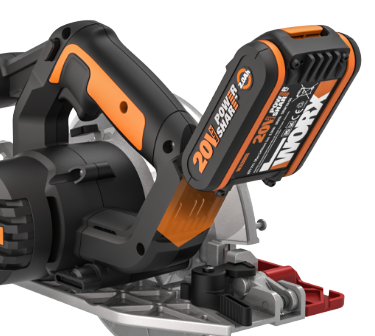
Did you know?
Cordless power tools that feature a brushless motor offer advantages over traditional electric motors. Brushless motors are well-known for offering higher efficiency, including 25% more power, 50% longer run-times, and an overall 10% longer life than regular electric motors.
Did you know?
Cordless power tools that feature a brushless motor offer advantages over traditional electric motors. Brushless motors are well-known for offering higher efficiency, including 25% more power, 50% longer run-times, and an overall 10% longer life than regular electric motors.
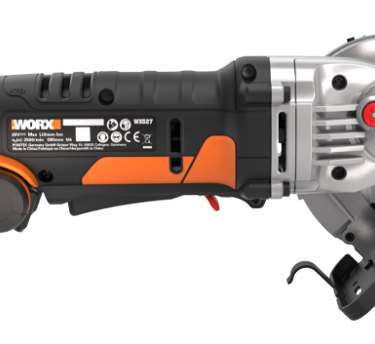
One hand or two?
Many circular saws are best operated with two hands for the greatest stability, which is why many have both a handle grip as well as a pommel grip. These saws tend to have the blade positioned on the right-hand side of the machine to favor the right handed user and a two handed grip. But there are also compact models available that can be safely operated with just one hand, which is easier to do while your other hand holds the workpiece in place. The blade for these machines is more commonly positioned on the left-hand side of the machine to enable a clearer view of the surface being cut when used by a right handed user.
 Worx Advantage
Worx Advantage
Worx handheld circular saws with one-handed operation
The small but powerful Worx 20 V PowerShare 85 mm WorxSaw compact circular saw gives users one-handed operation for better maneuverability and portability and can easily handle 25 mm stock timber, including plunge cuts (but no bevel cuts). The Nitro 20 V PowerShare 115 mm compact circular saw with brushless motor offers greater cutting depth and power while still affording convenient one-handed operation.
The small but powerful Worx 20 V PowerShare 85 mm WorxSaw compact circular saw gives users one-handed operation for better maneuverability and portability and can easily handle 25 mm stock timber, including plunge cuts (but no bevel cuts). The Nitro 20 V PowerShare 115 mm compact circular saw with brushless motor offers greater cutting depth and power while still affording convenient one-handed operation.
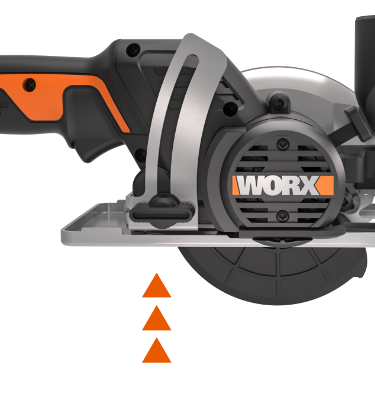
Faster changes =
faster work
Adjustments on a circular saw to make bevel cuts should be easy and not hold you up. The same holds true for blade changes. The easier it is to change blades on a circular saw, the faster you can switch between materials you need to cut.
 Worx Advantage
Worx Advantage
Worx circular saw easy adjustments and blade changes
Worx handheld circular saws feature an easy-adjustment knob or lever to take advantage of the full range of each saw’s bevel cut capacity from 0–57º (upper limit varies by model). Each model also features a spindle lock button and hex key for blade changes. The onboard storage of the hex means it’s always there when you need it, so you’ll never waste time on blade changes.
Worx handheld circular saws feature an easy-adjustment knob or lever to take advantage of the full range of each saw’s bevel cut capacity from 0–57º (upper limit varies by model). Each model also features a spindle lock button and hex key for blade changes. The onboard storage of the hex means it’s always there when you need it, so you’ll never waste time on blade changes.
Pro-Tip: Left or right?
Did you know that handheld circular saws are offered for both right-handed and left-handed users? Having a different blade orientation allows the user to grip the tool’s main handle with their dominant hand. However, a growing number of professional saw users have discovered that the best cutline visibility comes when the saw blade is on the left, so even some right-handed DIYers and professionals prefer models with the blade on the left.
Pro-Tip: Left or right?
Did you know that handheld circular saws are offered for both right-handed and left-handed users? Having a different blade orientation allows the user to grip the tool’s main handle with their dominant hand. However, a growing number of professional saw users have discovered that the best cutline visibility comes when the saw blade is on the left, so even some right-handed DIYers and professionals prefer models with the blade on the left.
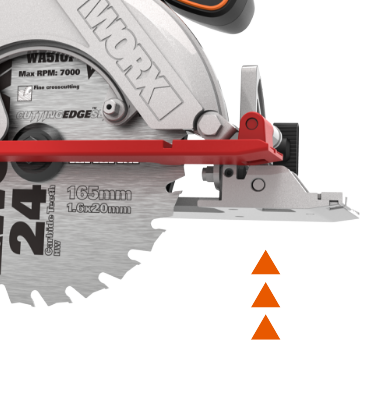
When precision and accuracy matter
In order to achieve precision and accuracy in handheld cutting applications, visibility is a must. Look for cordless handheld circular saws with innovative design features that help with accuracy, including integrated LED work lights that will illuminate the workspace in low-light environments, cutline accuracy aids, and easy blade alignment.
 Worx Advantage
Worx Advantage
Worx circular saw features for precision and accuracy
The Worx 20 V PowerShare 165 mm ExacTrack circular saw includes an innovative system for greater accuracy by keeping the blade flush against the cutting guide board. The Nitro 20 V PowerShare 115 mm compact circular saw with brushless motor features an innovative left-sided design for optimal visibility of the cutline. The Nitro 20 V PowerShare 184 mm circular saw with brushless motor features onboard LED lighting for better visibility in low-light conditions
The Worx 20 V PowerShare 165 mm ExacTrack circular saw includes an innovative system for greater accuracy by keeping the blade flush against the cutting guide board. The Nitro 20 V PowerShare 115 mm compact circular saw with brushless motor features an innovative left-sided design for optimal visibility of the cutline. The Nitro 20 V PowerShare 184 mm circular saw with brushless motor features onboard LED lighting for better visibility in low-light conditions
Behind the scenes
Luca is a stage technician. The stage is his home, and he knows every corner of it.
There’s no going on stage without him.
“My job is mostly about problem solving, and every scenography comes with its own specific issues. You need to adapt to space, build platforms, setup panels… A successful play relies on a lot of people, but it also relies on screws, nails, wood. In time, I have built a set of lightweight, cordless tools, because being fast and agile is of paramount importance.”
“My job is mostly about problem solving, and every scenography comes with its own specific issues. You need to adapt to space, build platforms, setup panels… A successful play relies on a lot of people, but it also relies on screws, nails, wood. In time, I have built a set of lightweight, cordless tools, because being fast and agile is of paramount importance.”
Behind the scenes
Luca is a stage technician. The stage is his home, and he knows every corner of it.
There’s no going on stage without him.
“My job is mostly about problem solving, and every scenography comes with its own specific issues. You need to adapt to space, build platforms, setup panels… A successful play relies on a lot of people, but it also relies on screws, nails, wood. In time, I have built a set of lightweight, cordless tools, because being fast and agile is of paramount importance.”
“My job is mostly about problem solving, and every scenography comes with its own specific issues. You need to adapt to space, build platforms, setup panels… A successful play relies on a lot of people, but it also relies on screws, nails, wood. In time, I have built a set of lightweight, cordless tools, because being fast and agile is of paramount importance.”


Same battery, expandable power
Worx PowerShare is a unique 20 V modular system that allows you to combine the same battery to multiply voltage to 40 V and even 80 V. PowerShare batteries are available in a choice of capacities so that you can choose what you need.

20 V 120 mm compact circular saw – One-handed operation
20 V PowerShare 120 mm brushless compact circular saw, batteries included - WX531

20 V 120 mm compact circular saw - One-handed operation
20 V PowerShare 120 mm brushless compact circular saw, tool only - WX531.9

20 V 190 mm circular saw – Ultimate power and ultra-lightweight
20 V PowerShare 190 mm brushless circular saw, tool only - WX520.9

ExacTrack guide, 165mm blade
ExacTrack 165mm Cordless Circular Saw 20V - Tool Only - WX530.9
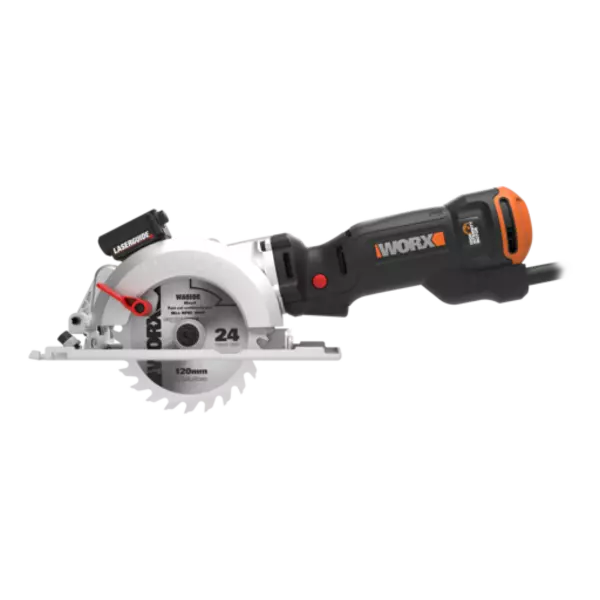
The lightweight, powerful alternative to heavy circular saws.
800W 120mm Electrical Compact Hand Saw Worxsaw XL - WX437

20 V 190 mm circular saw - Ultimate power and ultra-lightweight
20 V PowerShare 190 mm brushless circular saw, batteries included - WX520
Explore our circular saw
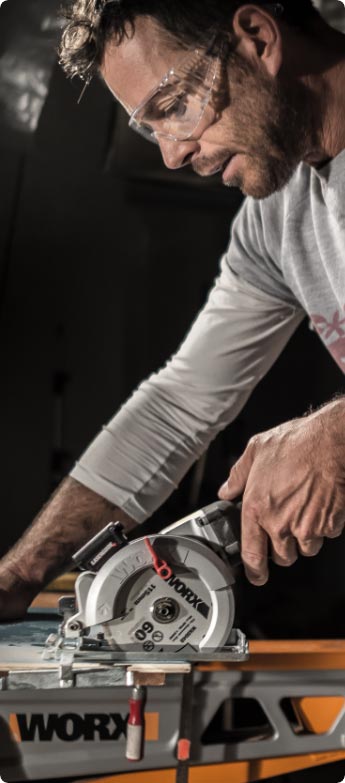


If you spend more time in your shed than your living room, you’re probably wondering what can we possibly teach you about tools that you don’t already know, right? Challenge accepted.